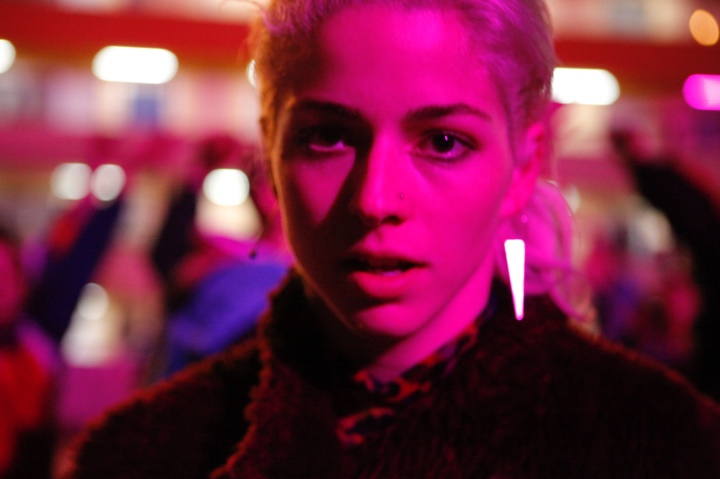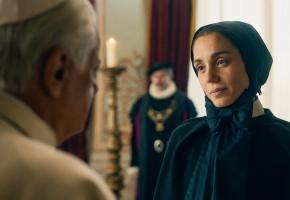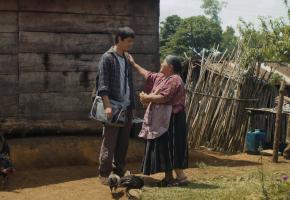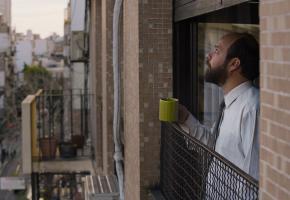In acclaimed director Pablo Larrain’s new film, Ema, played by Mariana di Girolamo is the peroxide, punkish and sultry member of an urban dance troupe led by choreographer Gastón (Gaël García Bernal) to whom she is married.
Their marriage is broken due to the pressures of coping with their adopted six-year old son Polo, who they have rejected and sent back to social services to be placed with another family. Though he burned down their house, scarring his aunt’s face for life and left the dog to die in the freezer, they cannot shake off their deep sense of guilt, which leads Ema into a desperate search for relationships and sexual abandon. Was the child a monster? They cannot decide and, at the same time, they cannot let go.
Mariana Di Girolamo effortlessly holds the screen with her seductive, anarchic quality. Born in Santiago de Chile in 1990, the rising star made her name in TV series such as Mega’s Pituca sin Luca (Broke Rich Girl) and will soon be featured in the new series La Jauría (Pack of Hounds) also produced by Larrain’s Fábula Productions.
Mariana’s talent and versatility are obvious; the screen likes her and she shifts with ease from ‘girl next door’ to ‘punk rebel.’ And yet, like so many who seem to simply ‘become’ movie stars, the 30-year-old has not come from nowhere. Daughter of producer Paolo Di Girolamo and painter Lucía Arteaga, she is also the niece of director and playwright Claudio Di Girolamo and renowned actress Claudia Di Girolamo.
“For me, it’s an honour to belong to this family and this lineage. I grew up with these aromas and these textures… I tried to study something else… I went into medicine and obstetrics, but the pull of the blood was stronger! They’re also proud of me. It’s a family that has given me a lot of freedom and they’ve been very wise in not trying to control me. I have managed to make a little bit of a name for myself, a career that I initiated on my own but I’m very grateful to them. However, when we’re at home we talk about other things!”
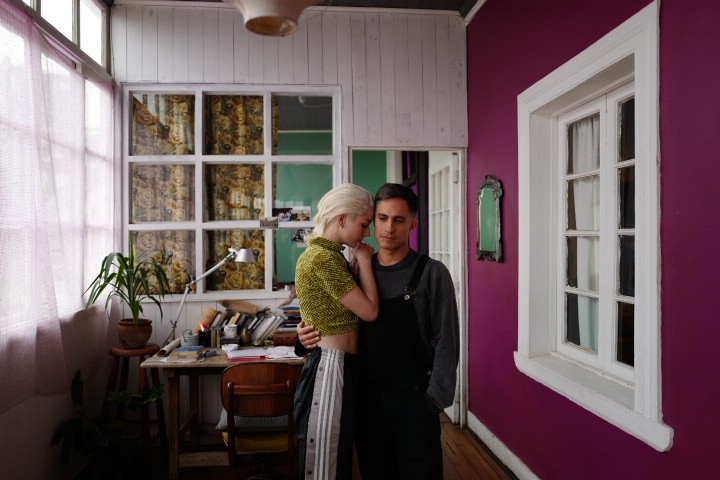
In the film, Mariana expresses herself through her body and music. Through the beautifully choreographed sequences, we enter her mind and her thoughts, where Ema is dwelling so much of the time. With eloquence and style, the Reggaeton beats and the violence of the sequences veer from one emotion to the next, taking the audience with them. Dialogue is translated into dance.
“I had never danced professionally although I have always loved dancing! When I was a child, I took intermittent courses in different forms of dance, like Flamenco… for one or two months at a time… and I’m always going out to dance... especially as my boyfriend is a dance music producer. I love dancing but I’d never done it professionally. I don’t know exactly why the idea of incorporating dance into the movie arose, maybe because I’d just returned from a long trip to Europe where I’d been to some amazing dance clubs in Berlin when I started to talk to Pablo (Larraín) about the film … it might have had its roots in that conversation.”
Larrain’s films (Post Mortem, No, Jackie) are know for their brilliantly eery and unusual cinematography, and this one is exception, already picking up the much coveted ‘Art Cinema’ Award at The Ljublyana International Festival which awards the “film that bears a distinctive signature of its maker.” The juror’s felt Ema was “aesthetically sophisticated and unique, visually and sensually dynamic creation, often daring in its themes and aesthetic, theatrical and, as a whole, utterly convincing.”
Indeed, the start of the film has a dance ‘overture’ to the music of The Rites of Spring by Igor Stravinsky, in a powerful setting where the dancers are almost silhouetted against a vast sun: -
“The initial dance is a piece that José Luis Vidal had already created and we had to learn it and it was hard… I wanted to dance as well as those professional dancers, although Vidal works with some amateurs as well. I worked a lot with a group, who were like ‘maestros’ to me and it was very interesting. I loved the experience! In parallel, the Reggaeton sequences were a little more improvised. We would meet up in a rehearsal room. Sometimes we would split into smaller groups of five and rehearse specific moves and then the choreographer Mona Valenzuela would put together the structure of the dance. We had about four choreographed sequences that we inserted throughout the film. Especially the scenes where we were dancing in the streets.”
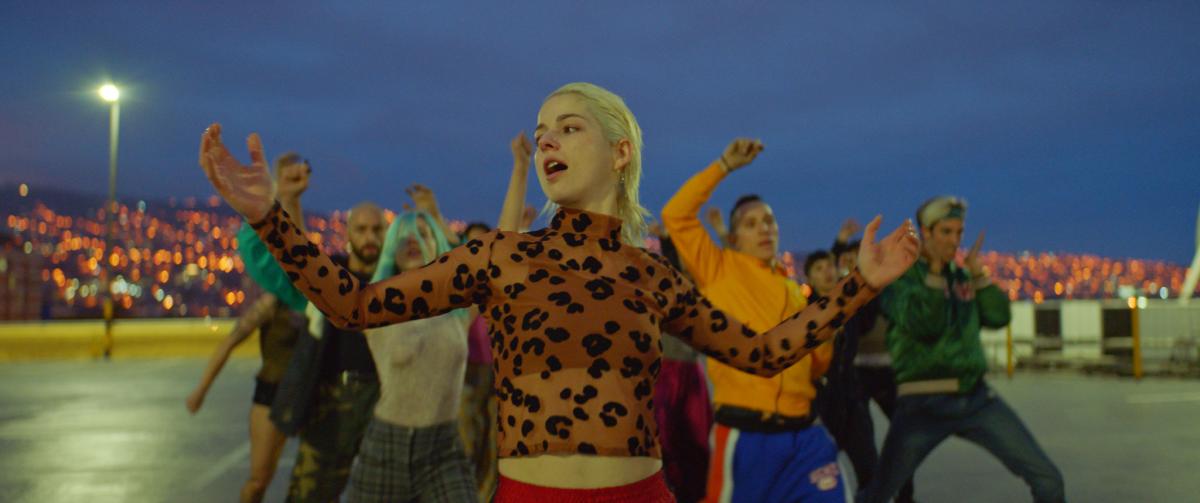
Despite hiring Guillermo Calderón (who’s play ‘B’, played at London’s the Royal Court Theatre) helped with the dialogue, in Larraín’s search for a sense of immediacy and truthfulness, so there was no formal script offered to the actors. How did Mariana deal with this?
“Well, for a start we couldn’t read anything before filming and at the beginning, it was truly terrifying to work without knowing where it was going and what would be happening. Pablo would talk to me and describe Ema as this contemporary woman, who was very free, and explained the adoption issue and Gaël’s role, but not much more. I like to have everything under control. I come from the world of television where you start with a script of 10 episodes and you know very clearly where that character came from and where it’s going…but here that wasn’t relevant.
And so how did the dialogue evolve without a script?
“I understood that was how it was going to be and that we would be working with improvised dialogues and a lot of trust… and in the end it was liberating because you found yourself with your companions, with Gaël, the crew, the director and the incredible back drop of the city of Valparaíso and working…working, repeating! Pablo is very respectful, and I am extremely grateful because we had to do some really complicated scenes… but he gave me enough space. He knows what he wants but he is also open to ideas and contributions on our part.”
Ema respects no boundaries or limits, she revels in sensuality and pleasure wherever it calls, as she tries to deal with her family trauma, with no one to turn to. She plays with people’s emotions, no less with one of the targets of her affections, a firefighter, played by Venezuelan actor Santiago Cabrera. She sways between sexes. Her dangerously rebellious quality adds tension as we do not know where she might go, toying with flame throwers, torching traffic lights and cars in homage to her rejected son who burned down their house. There is a tough beauty to the dance sequences, betraying a deep pain.
“Dance is an extension of her body, she uses it to seduce, not only sexually, but also the world around her, the other characters…” explains Mariana. “It is the expression of an internal game that she is playing, and that is why she gets bored of the more traditional dances and moves out into the streets.”
Gaël García Bernal as Gastón is also beset by guilt and recriminations, which go from love to rage as he also tries to come to terms with their decision. In a way, they are both monsters as well, unyielding and merciless towards each other. They are emotionally damaged and perversely refusing to come to terms with each other’s emotions.
Bernal is an excellent fob to her, as he rages against the mindless repetitive beats of Reggaeton, what it represents and what it says about her very essence. This reflection reflects a class and social attitude towards Reggaeton, or urban music in Latin America in general.
Just as the essence of Reggaeton remains a mystery to many middle and upper class Latinos, especially those not from the Latin Caribbean, Ema’s essence also remains a mystery. Pablo Larraín is never going to make it easy for the audience. As with all his films, he challenges us to cross boundaries and enter terrains we feel uncomfortable.
Mariana di Girolamo is now back in Chile after visiting many countries with the film, preparing to shoot the second season of ‘La Jauría’ - a detective series directed by the famous Argentine director Luiz Puenzo for Amazon Prime. This will be followed by Los Prisioneros (The Prisoners), a series based on a hugely successful Chilean rock band that pioneered “Electro –cumbia.”
Enjoying hitting the international scene, the Chilean actress has signed up with UTA (United Talents Agency) in Los Angeles. Mariana is a girl with big ambitions:
“I want to work with directors that I admire. I want to continue to experiment with different formats. It is already a dream that I am able to make a living from acting, especially after going through the frustration and learning curve of studying something I didn’t like and having the privilege to being able to change course and dedicate myself to this, that is dream enough… it is also my dream to be able to accommodate my career with my friends and family. This world I’m entering is all a bit overwhelming and can feel frightening at times, but I want to be able to go on being true to myself, true to my origins and my values.”
EMA will premier tomorrow 2nd Mayo n MUBI https://mubi.com/


